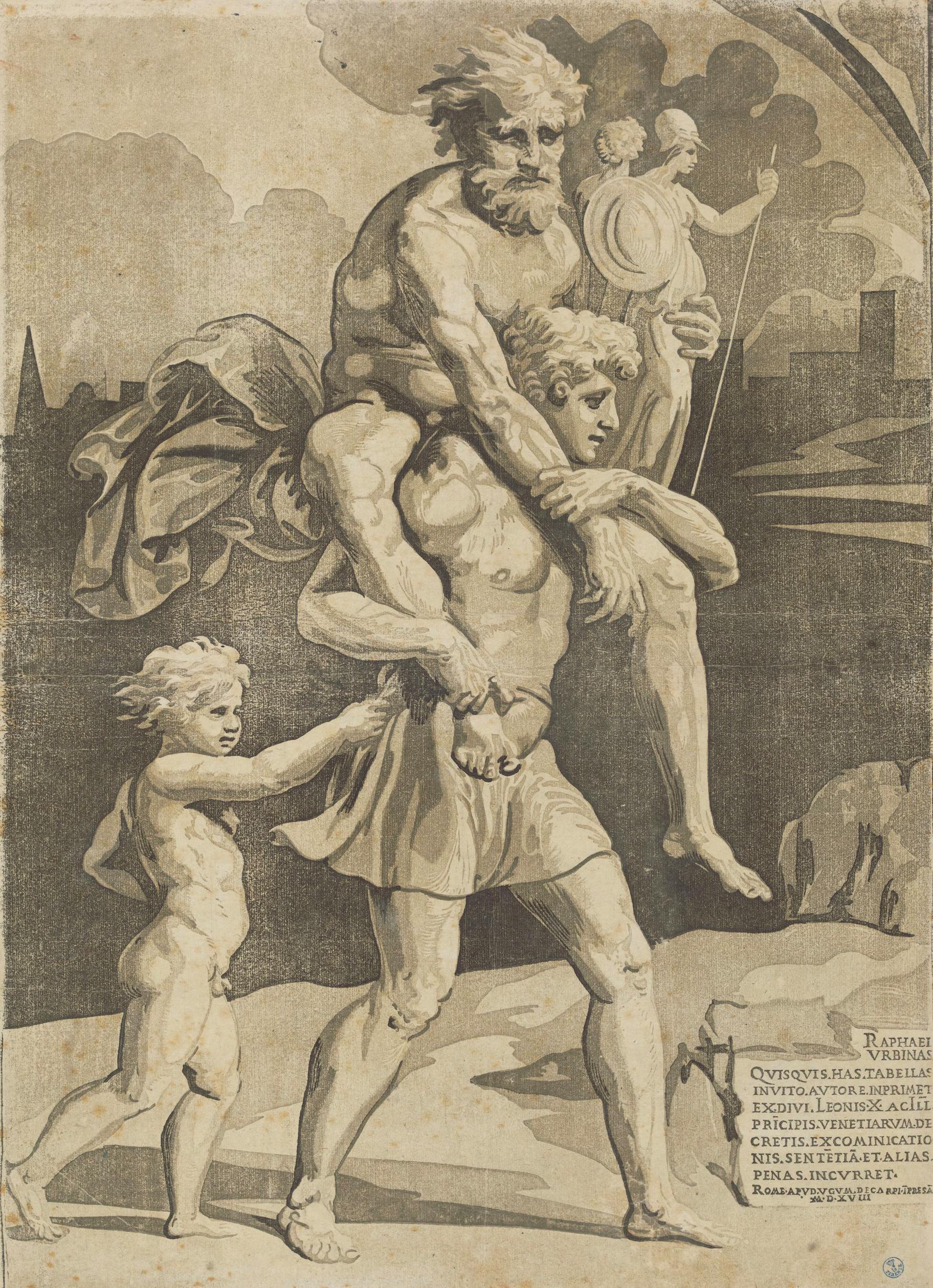Aeneas’ Flight
Ugo da Carpi (Carpi, Modena 1470 c. – Bologna 1532), da Raffaello
«RAPAHEL VRBINAS / QVISQVIS HAS TABELLAS / INVITO AVTORE IMPRIMET / EX. DIVI. LEONIS.X. AC ILL / PRI[N]CIPIS. VENETIARVM DE-/CRETIS. EXCOMVNICATIO-/NIS. SENTE[N]TIA[M]. ET. ALIAS/ PENAS. INCVRRET./ ROMAE. APVD. VGUM. DE. CARPI. I[M]PRESSA[M] / M.D.XVIII»
Distinguished by its size, technique and clearly visible authorship, this large print cited by Vasari represents a manifest of sorts through which Ugo da Carpi laid claim to the invention of the new xylographic chiaroscuro technique which imitated the effects of drawing. The group of figures draws inspiration from a famous episode featured in the fresco of the “Fire in the Borgo”, painted by Raphael and his pupils between 1514 and 1517 in the Vatican Rooms. The large format emphasizes the huge stature of the figures, while the colour of the inks in gradual shades of grey and brown gives them the appearance of statues rather than painted figures. Dating back to 1518, this work was one of the first prints by Ugo da Carpi in Rome and met with immediate success. The engraver known as the ‘Maestro B del Dado’ also created a specular copy in burin, a clear evidence of the popularity of this subject which later would become highly influential and replicated in various techniques and mediums.
